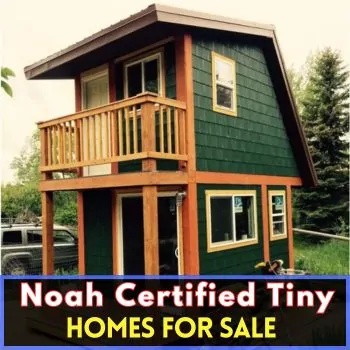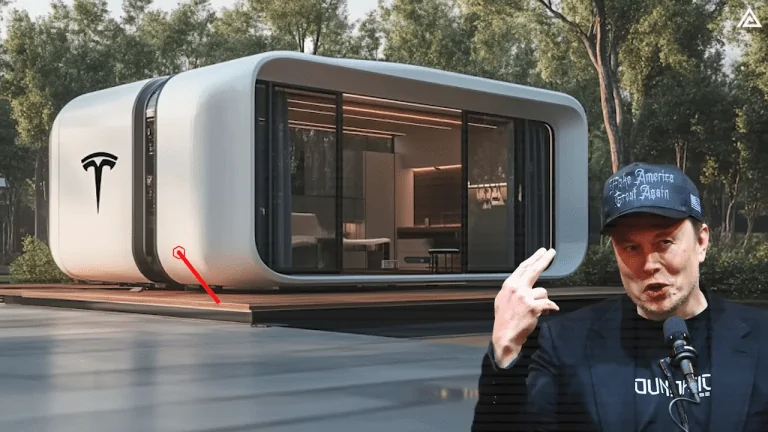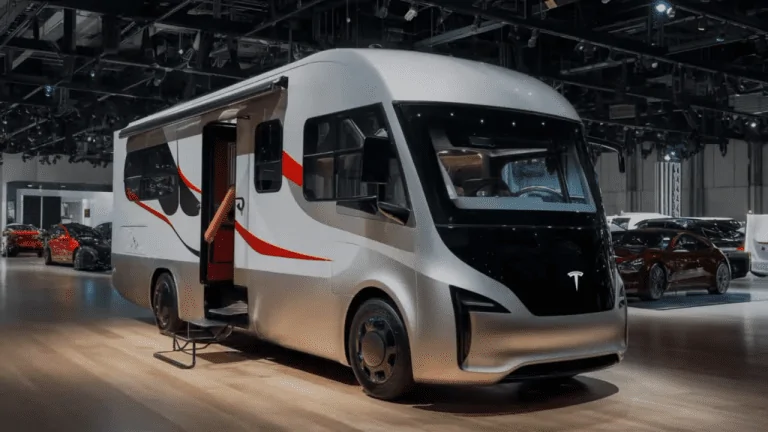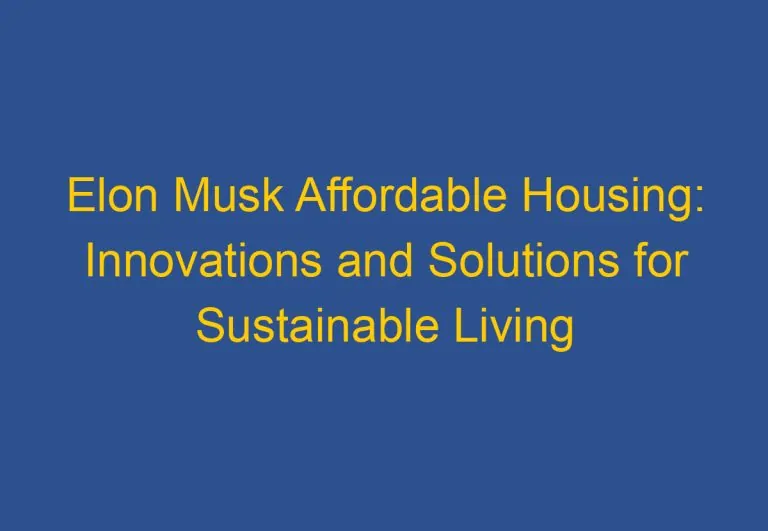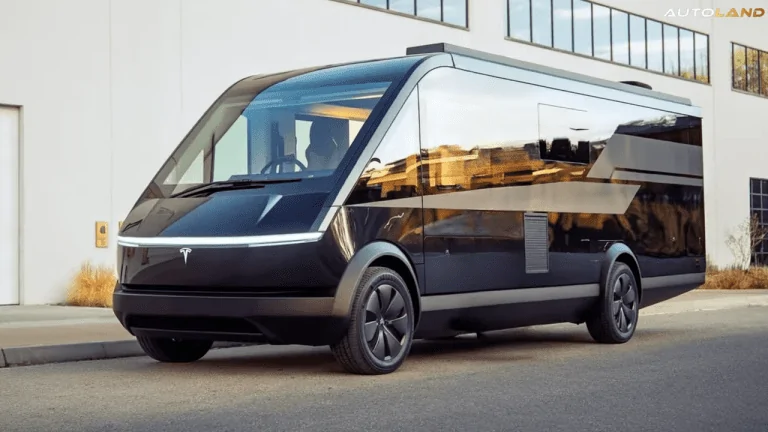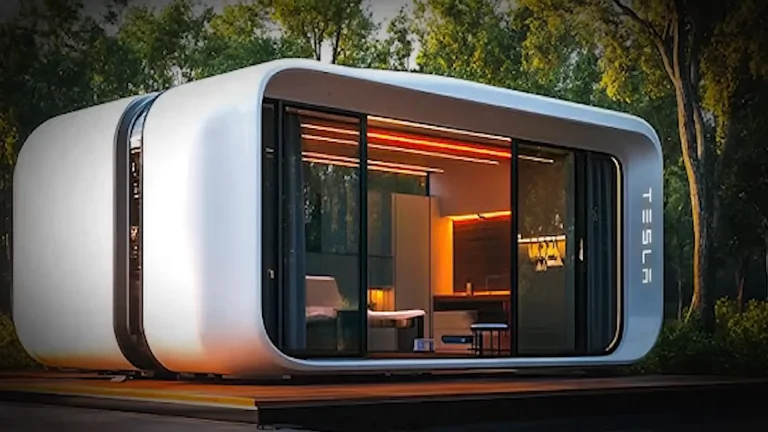What Is A Tesla Tiny House? Exploring Innovative Sustainable Living Solutions
As the push for sustainable living gains momentum, the tiny house movement has emerged as a compelling alternative to traditional housing. These small, efficient homes present an innovative way to reduce one’s ecological impact while offering a unique lifestyle. With a focus on minimalist living, tiny homes challenge conventional ideas about space and resources, making them an appealing choice for environmentally-conscious individuals.
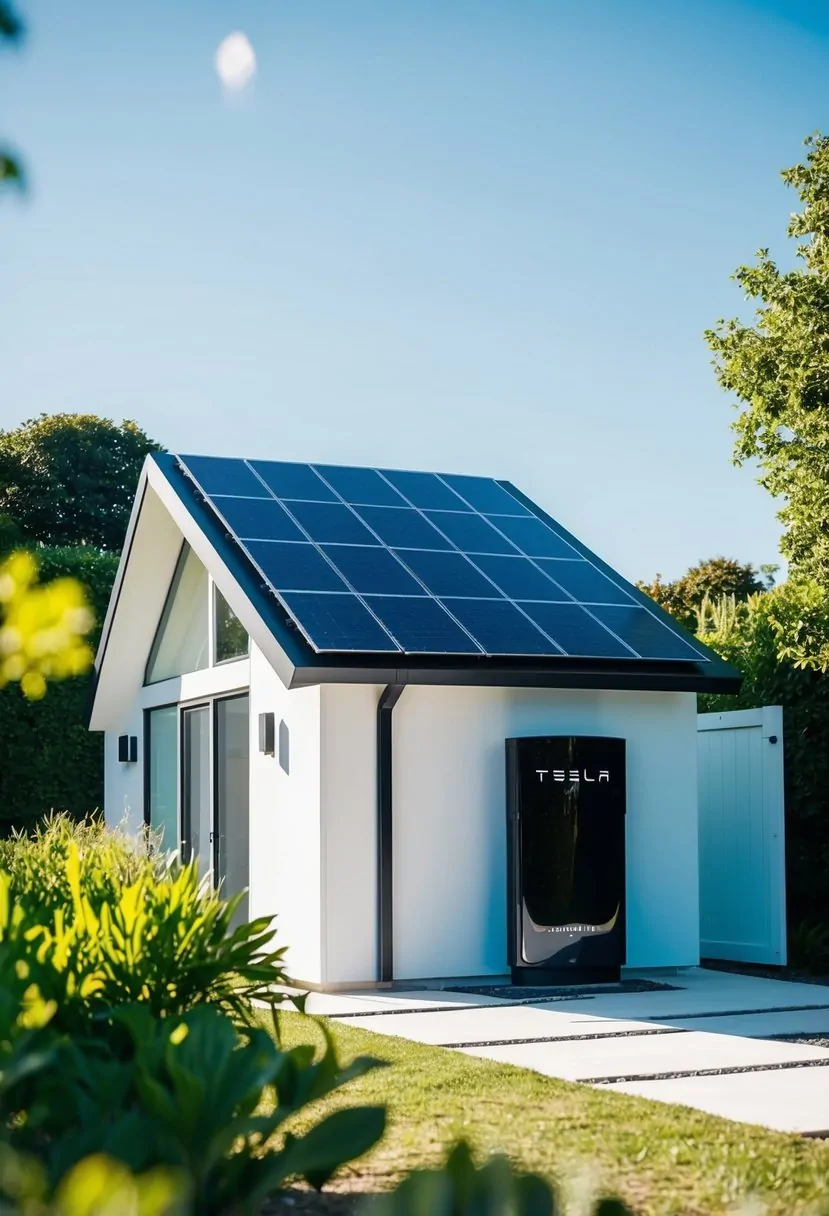
A notable example within this trend is the Tesla Tiny House, which combines advanced technology with the principles of eco-friendliness. This concept not only aims to minimize carbon emissions but also offers features like solar energy storage, potentially lowering or even eliminating monthly utility bills. Exploring the details of Tesla Tiny Houses can provide insight into their design and functionality, as well as their capacity to contribute towards a greener future.
Tesla’s Tiny House Significantly Reduces Carbon Emissions
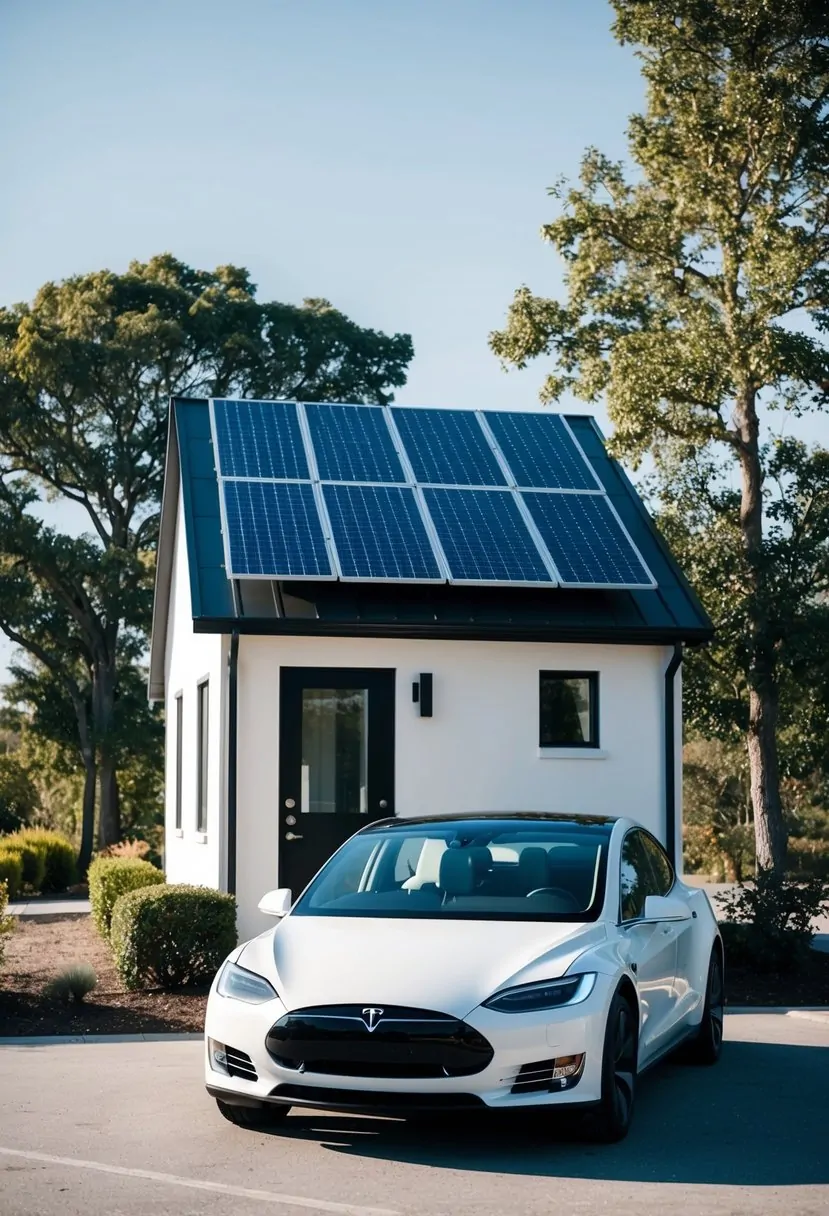
A major benefit of the Tesla Tiny House is its significant ability to lower carbon emissions. Unlike conventional homes that depend on fossil fuels for energy, these compact houses utilize renewable resources for power.
These tiny homes are equipped with solar panels, wind turbines, and other clean energy solutions, allowing them to achieve a near-zero carbon footprint. This is made possible by optimizing space and effectively using resources. The smaller living area inherently requires less energy for heating, cooling, and running appliances.
In addition, advanced insulation and energy-efficient appliances play a crucial role in reducing total energy usage.
| Conventional Home | Tesla Tiny House |
| Depends on fossil fuels | Utilizes renewable energy |
| Larger living space | Compact and effective |
| Higher energy use | Reduced energy demands |
| Notable carbon footprint | Near-zero carbon output |
By following sustainable practices, the Tesla Tiny House not only decreases its inhabitants’ carbon footprint but also serves as a model for sustainable living. It illustrates how individuals can contribute to a healthier planet through mindful choices, one step at a time.
Powered by a Tesla Battery for Solar Energy Storage
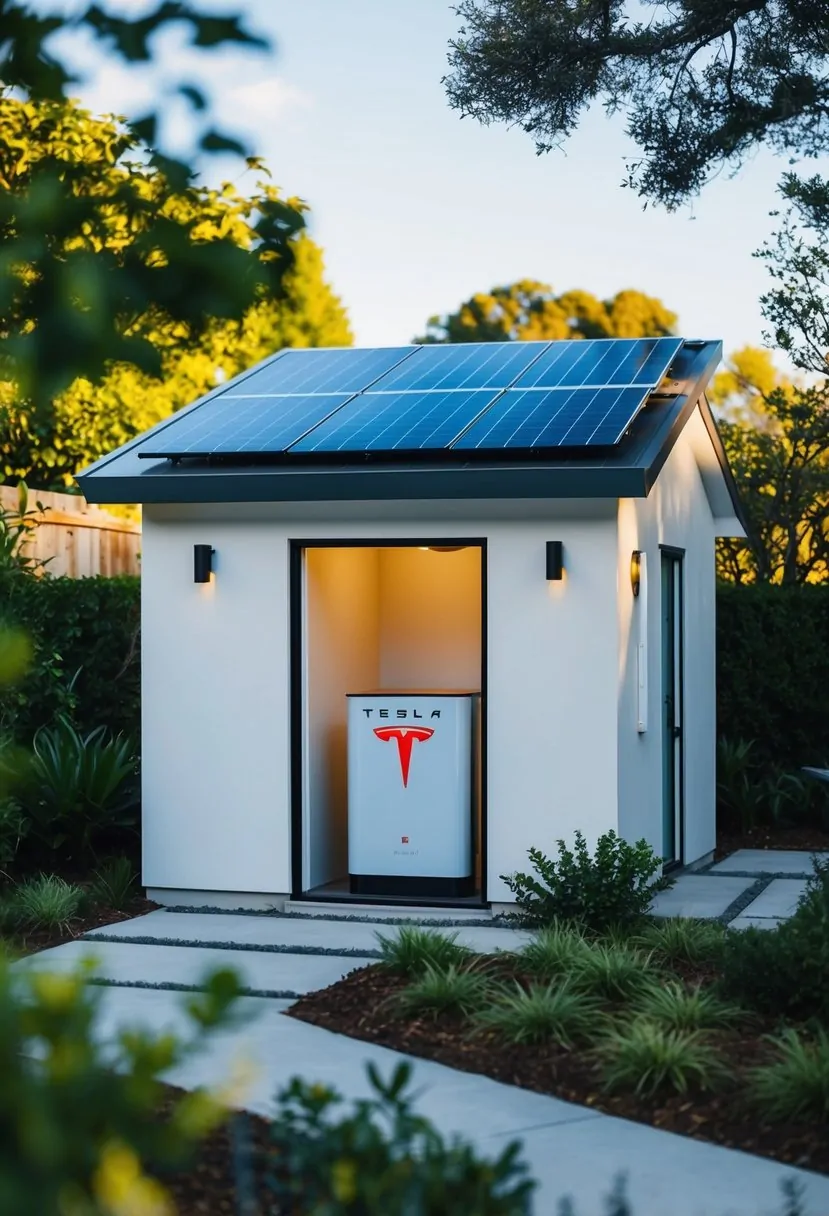
A Tesla Tiny House features an advanced energy storage solution known as the Tesla Powerwall. This innovative battery system captures solar energy produced by the home’s solar panels, ensuring a steady supply of electricity even when sunlight is minimal.
The Powerwall integrates smoothly with the house’s electrical setup, powering essential appliances, lighting, and other devices. This integration helps decrease dependence on conventional energy sources, promoting greater self-sufficiency and independence from the grid.
Beyond storing energy, the Powerwall doubles as a monitoring system. It provides homeowners with real-time data on energy production and consumption. This information empowers them to optimize their energy use and make smart decisions regarding potential upgrades.
Additionally, when paired with Tesla’s solar roof or roof tiles, this system represents a comprehensive approach to renewable energy and sustainable living, showcasing cutting-edge technology and innovative storage solutions.
The Tiny House Can Even Cut Down or Eliminate Monthly Utility Costs
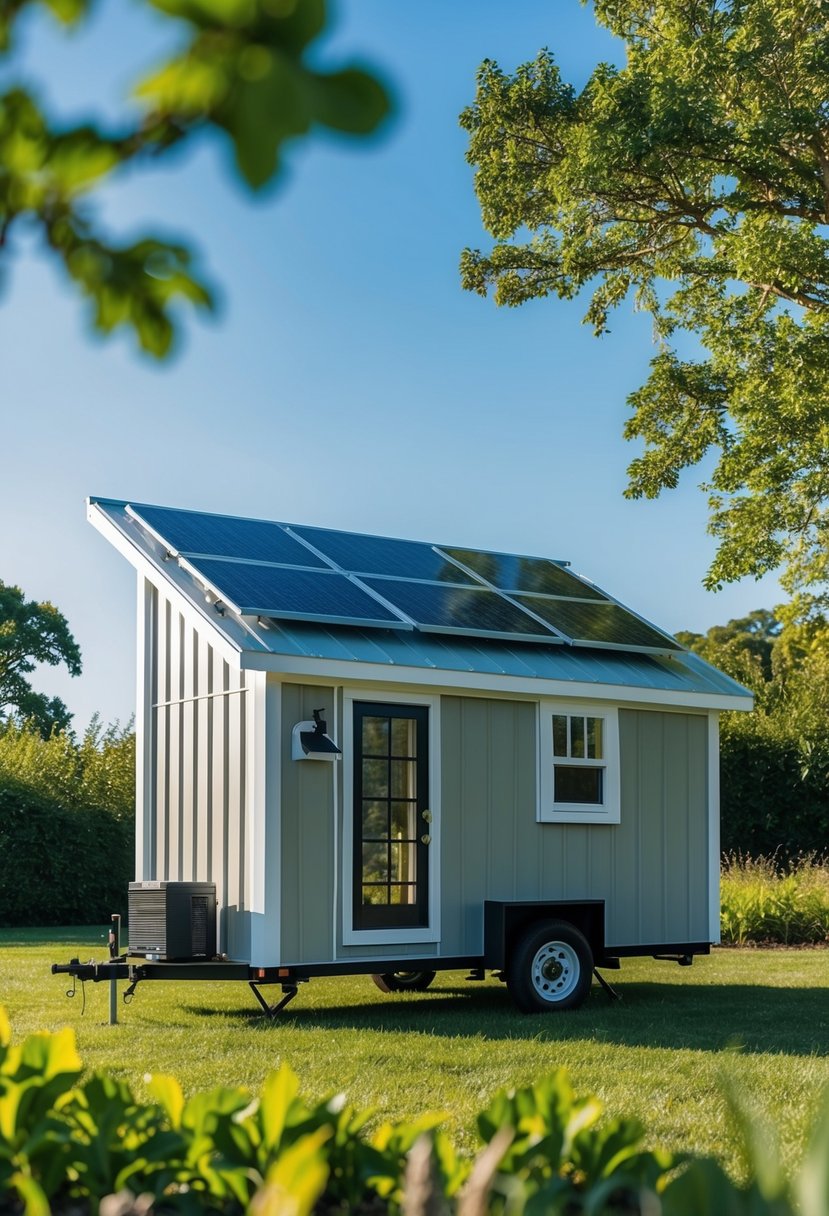
A Tesla Tiny House offers the possibility to significantly reduce or even eliminate monthly utility costs. These compact homes utilize renewable energy sources and energy-efficient technologies, minimizing dependency on conventional utility services.
One key feature is the integration of solar panels along with the Tesla Powerwall battery, which stores energy for later use. This setup can lead to electricity bills that are nearly nonexistent.
Additionally, the small size of these homes often means there is little need for large heating and cooling systems, cutting down on energy consumption. Many tiny home communities also incorporate practices like rainwater harvesting and greywater recycling. These methods reduce the reliance on standard water supply and sewage services, enhancing both cost savings and sustainable living practices.
What Is Included In A Tesla Tiny House And How Much Are They?
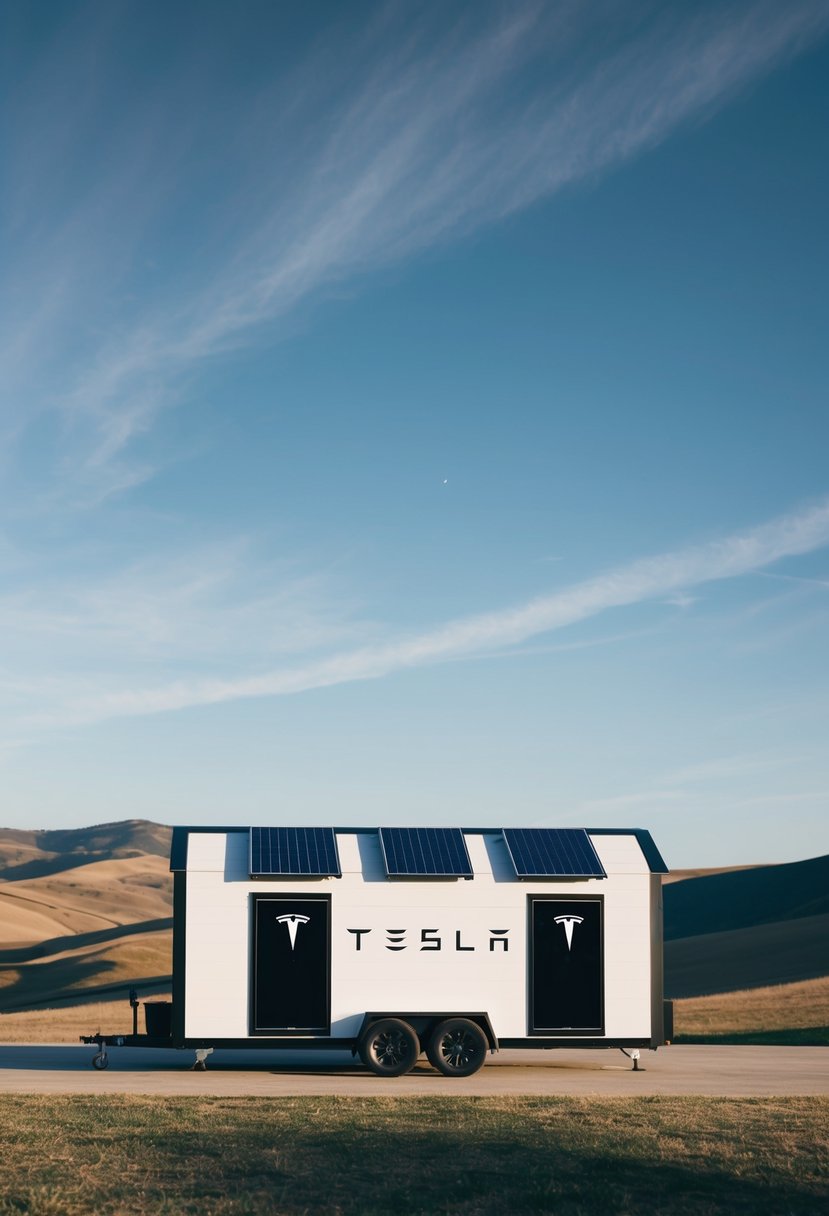
A Tesla Tiny House is designed to offer compact living without sacrificing comfort or quality. These structures include several impressive features:
- Open-Concept Layout: This design combines the living, dining, and kitchen areas, creating a spacious feel.
- Loft-Style Bedroom: By utilizing vertical space, the bedroom provides a cozy sleeping area.
- Compact Bathroom: Equipped with water-efficient fixtures, this space maximizes functionality.
- Natural Light: Large windows and skylights enhance indoor lighting and airflow.
- Energy Efficiency: High-quality insulation paired with energy-efficient appliances supports a sustainable lifestyle.
- Renewable Energy Solutions: Solar panels and a Tesla Powerwall battery allow for effective energy storage.
Additional features may include options for rainwater harvesting and greywater recycling systems. The cost of a Tesla Tiny House generally ranges from $50,000 to $100,000, depending on choices and customizations. Although the initial price point may be higher than traditional tiny homes, the potential long-term savings on energy bills and the lower environmental impact make it an appealing option for eco-conscious buyers seeking a minimalist aesthetic and multifunctional living space.
Availability of Tesla Homes
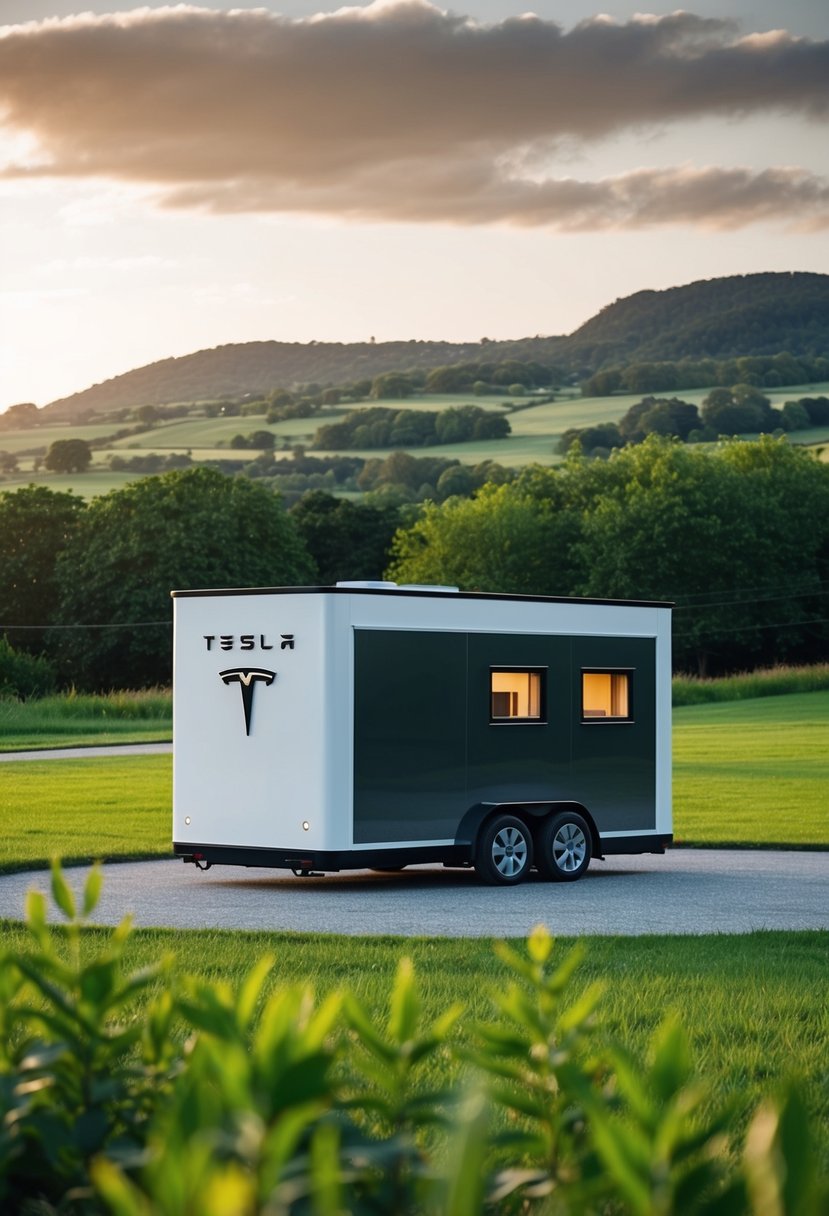
Many people have shown interest in owning a Tesla tiny house. These homes blend modern design with sustainability and efficiency, becoming popular in discussions about alternative living. Currently, the anticipated price for a Tesla house remains unconfirmed. Early rumors suggested a price point around $15,000, but reports indicate that the actual starting price is likely closer to $19,900 through partnered tiny home builders.
Plans for Tesla Tiny Homes
Elon Musk has been a figurehead in promoting affordable, eco-friendly housing. The Tesla tiny house concept aims to offer a subsidized living space combined with advanced technology. These homes will be prefabricated and designed to utilize clean energy sources, such as solar power. This technique promotes a sustainable lifestyle, reducing the reliance on fossil fuels and cutting down energy costs.
The Tesla house will come equipped with energy storage systems, solar panels, and smart technology. These innovations allow residents to live in a self-sustaining manner, essentially reducing their expenses and environmental impact. While plans for wide commercial availability of these homes are still in the development phase, they present a promising option for those intrigued by sustainable living.
Energy Solutions
A Tesla tiny house will be designed with a robust solar power system. This will accommodate rooftop or wall-mounted photovoltaic panels, offering flexibility in energy generation. Rooftop installations are commonly more economical, producing more energy with less equipment. In contrast, wall-mounted systems can be advantageous depending on the home’s specific design.
The solar power generated through these systems can meet most, if not all, of the household’s electricity needs. Monthly requirements will influence the size and setup of these solar panels, allowing homeowners to tailor their energy solutions to their circumstances. The use of advanced energy-efficient appliances further enhances the sustainability of Tesla homes.
Characteristics and Design
Tesla tiny houses emphasize a minimalist aesthetic. The design includes elements of timber and multifunctional spaces. This approach not only maximizes comfort but also ensures quality and durability. The compact nature of a tiny home does not detract from the overall living experience; it often enhances it by encouraging residents to live with less clutter.
Insulation standards will be high in Tesla tiny homes, ensuring that residents stay comfortable year-round. These homes are meant to be more than just living spaces; they’re designed to be modern, energy-efficient, and stylish. The combination of sustainable timber and smart design principles makes them viable options for anyone interested in tiny home living.
Current Market Options
Though the Tesla tiny house itself is not available yet, there are alternatives on the market. Companies like Craftsman Tiny Homes are producing their versions of sustainable living spaces at comparable price points. These options range from $10,000 to $15,000, making them accessible for those eager to enter the tiny home movement.
These homes may not carry the Tesla brand, but many include eco-friendly materials and innovative technology. As the demand for sustainable housing increases, the supply of quality options grows. This means individuals interested in tiny living can find suitable choices while waiting for official Tesla homes to become available.
Future Prospects
The future availability of Tesla tiny houses remains uncertain, but there is hope on the horizon. As projects develop and rollouts begin in various regions, including Australia, the potential for broader availability increases. The vision behind the Tesla house aligns closely with the growing trend of sustainability and eco-conscious living.
The integration of renewable energy and intelligent design ensures that Tesla homes are well positioned in the current market. Once available, they are expected to attract individuals looking for modern living solutions while minimizing their environmental footprint.
Closing Thoughts
People interested in tiny homes should remain optimistic. While Tesla’s entry into the tiny house market has not yet manifested, the growing demand for eco-friendly and affordable housing options pushes other companies to innovate. Each step forward in sustainable building practices not only supports environmental goals but also broadens access to efficient living spaces.
As interest continues to rise, innovators and builders will keep creating homes that embody these ideals. The transition to tiny living and sustainability holds promise for those excited about embracing a new way of life. With patience and continued advancement, the dream of owning a Tesla house might soon become a reality for many.
Tesla Is Not The Actual Manufacturer
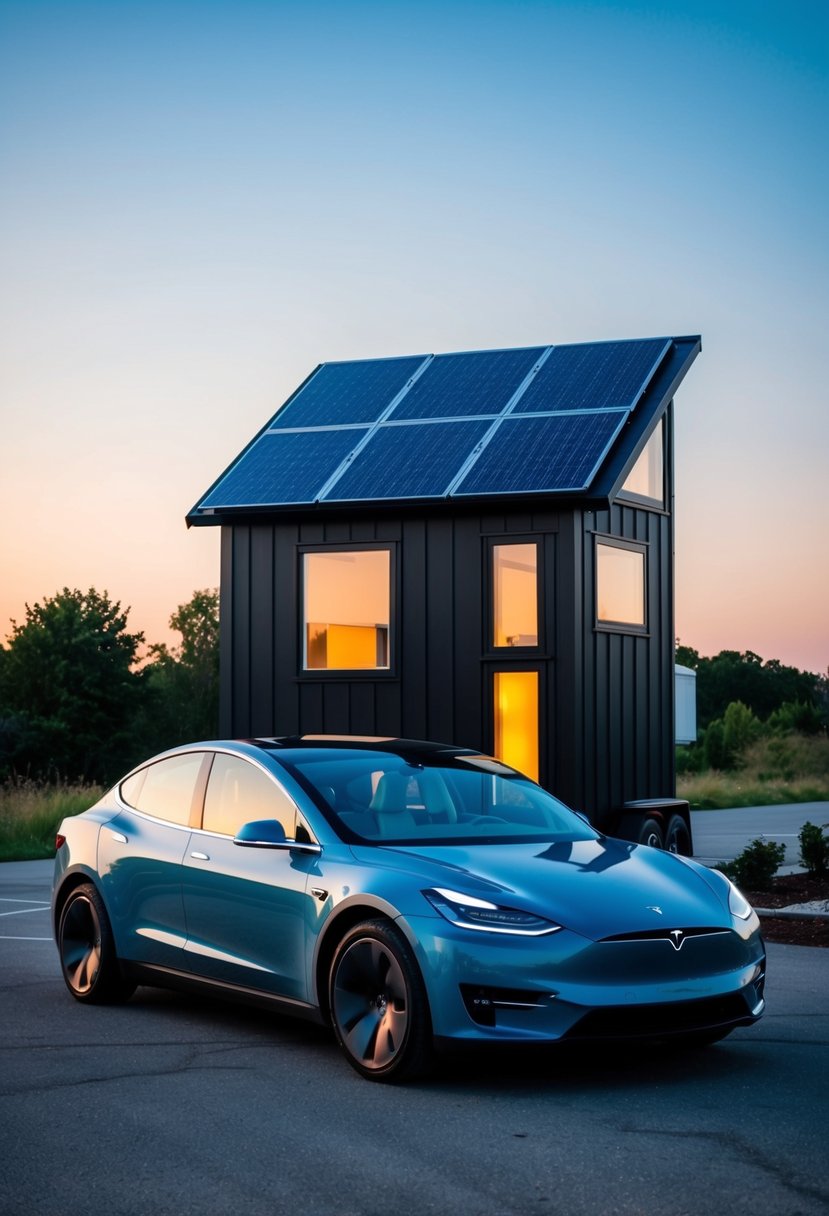
Despite the association with the Tesla name, Tesla does not manufacture or sell what are known as “Tesla Tiny Houses.” The popularity of these tiny homes stems from innovative technologies, such as the Powerwall, which provide efficient energy storage solutions. These are often integrated into smaller, eco-friendly residences.
The true producers of these homes are companies that focus on prefabricated and modular housing. A notable example is Boxabl, a startup based in Las Vegas renowned for its “Casita” model. This compact home measures 375 square feet and emphasizes energy efficiency and sustainability.
While homes like Boxabl’s Casita may utilize Tesla’s energy systems, they are not directly linked to or manufactured by Tesla. The connection to such a well-respected brand has certainly increased interest in these sustainable living options. Recognizing this distinction is crucial for avoiding confusion and understanding the actual origins of these tiny homes.
Some Related Questions
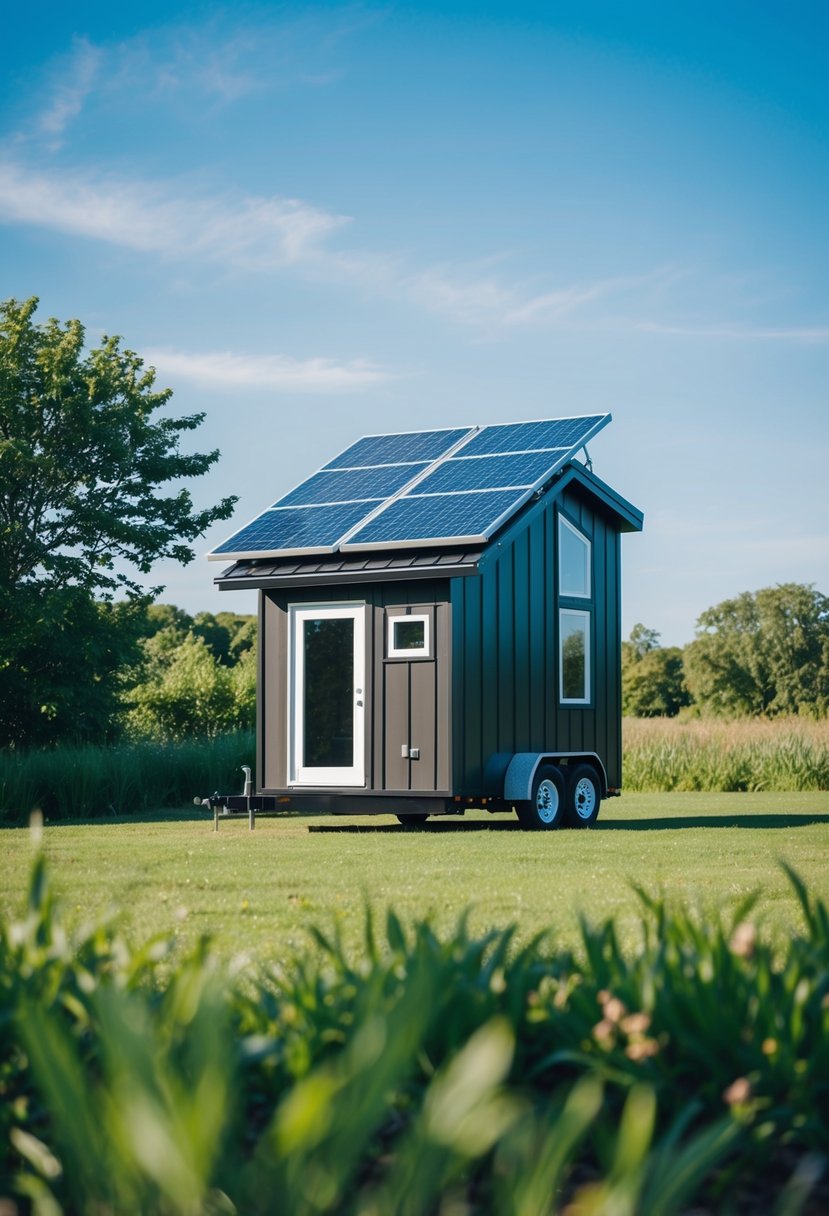
Many people have questions about the Tesla Tiny House concept. Here are some common inquiries:
Are these homes made by Tesla?
Tesla does not manufacture tiny homes. Instead, the term refers to small, eco-friendly houses that utilize Tesla’s energy solutions like the Powerwall battery for electricity storage.What is the price range for a Tesla Tiny House?
The price for these homes generally falls between $50,000 and $100,000. Variations in cost depend on the features and custom options chosen by the buyer.Can homeowners eliminate monthly bills?
By installing solar panels and using a Tesla Powerwall, it is possible for these tiny houses to dramatically cut down or even eliminate utility bills related to electricity, water, and sewage services.Where can one buy a Tesla Tiny House?
Currently, most manufacturers are based in the United States. However, there is growing interest globally for such sustainable living environments.Can these homes be personalized?
Yes, customization is widely available. Buyers can modify layouts, choose interior styles, and add other eco-friendly features to create a home that fits their lifestyle.
Are Tesla Tiny Houses Actually Manufactured by Tesla?

Tesla Tiny Houses are not manufactured directly by Tesla, Inc. Instead, they are often built by various companies that incorporate Tesla’s energy technology. These homes utilize Tesla’s solar panels and energy storage systems, like the Powerwall, to achieve eco-friendly living.
Key Features of Tesla Tiny Houses
- Energy Efficiency: They are designed to be highly energy-efficient, often featuring modern insulation and sustainable materials.
- Eco-Friendly Technology: Many units include solar panels that harness renewable energy and battery systems for energy storage.
- Compact Design: Typically around 375 square feet, these homes provide essential living spaces such as a kitchen, bathroom, and sleeping areas.
Manufacturers and Collaborations
Several builders and sustainable home companies partner with Tesla to offer these innovative homes. Tesla’s role mainly focuses on providing the technology that makes these tiny houses energy-efficient and eco-conscious.
Conclusion
In summary, Tesla Tiny Houses leverage Tesla’s technology for sustainability, but they are not directly built by Tesla itself. They represent a growing trend in eco-friendly housing solutions that prioritize energy conservation and minimal environmental impact.
How Much Does a Tesla Tiny House Cost?

A Tesla Tiny House is an innovative and sustainable option for those looking to downsize or live more environmentally friendly. The cost of a Tesla Tiny House can vary based on several factors, including design, features, and additional technology options.
Estimated Costs
- Base Price: The starting price typically ranges from $40,000 to $150,000. This depends on the specific model and included features.
- Customization: Buyers can expect to pay more for customizations, such as upgraded solar panels or energy-efficient appliances.
- Location Factors: Prices may also fluctuate based on delivery costs and local regulations regarding tiny homes.
Potential Additional Expenses
- Land Costs: If a buyer needs to purchase land, this can significantly increase the overall investment.
- Permits and Fees: Local zoning laws may require permits, which can add to the budget.
- Utility Connections: Setting up connections for water, electricity, and sewage might also incur extra costs.
Investing in a Tesla Tiny House offers not just a living space but a sustainable lifestyle. Each house is designed with eco-friendly materials and technology that can save money on energy bills over time.
Can a Tesla Tiny House Truly Eliminate Utility Bills?
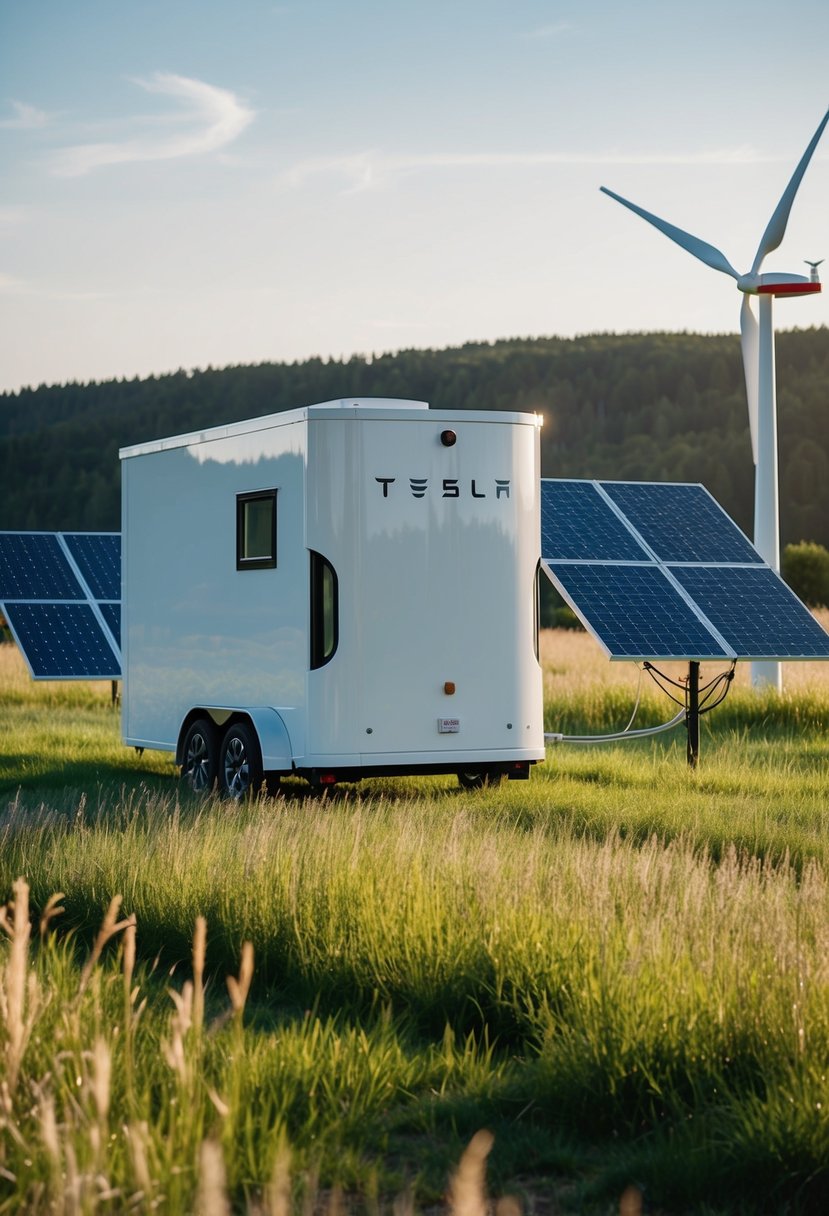
A Tesla Tiny House features advanced energy systems designed to significantly reduce utility expenses. Here’s how it works:
Solar Power: Equipped with solar panels, the tiny house can generate its own electricity. This means homeowners can capture sunlight during the day and use that energy to power their appliances.
Energy Efficiency: The design emphasizes energy-efficient appliances and insulation, minimizing electricity usage. High-quality materials help maintain temperature, reducing heating and cooling costs.
Battery Storage: With a built-in battery system, energy generated during sunny days can be stored for later use. This allows homeowners to rely on their stored solar energy even during low sunlight periods.
Low Water Usage: Many Tesla tiny homes incorporate water-saving fixtures and systems that reduce the amount of water needed, further lowering utility bills.
While a Tesla Tiny House can drastically reduce utility costs, it may not eliminate them entirely. External factors like local electricity rates and varying sunlight availability can impact overall savings. However, for many, the combination of renewable energy and efficient design offers a promising path towards lower energy expenses.
Are Tesla Tiny Houses Available for Purchase Globally?

Tesla Tiny Houses are attracting attention for their innovative design and eco-friendly features. While interest is growing, availability varies by region. Here are key points to consider:
Current Availability: Tesla is rolling out its tiny homes in specific areas, primarily within the United States. The company aims to expand as production capabilities and local regulations allow.
Sustainability Focus: These homes are not just small; they are designed to be energy-efficient. They often feature solar panels and advanced energy systems, making them appealing to environmentally conscious buyers.
Pricing: The initial cost can be higher compared to traditional tiny homes. A Tesla Tiny House may start at around $19,900, reflecting its advanced technology and sustainable features.
Regulatory Considerations: Potential buyers should be aware that housing laws differ significantly across countries and states. These regulations can affect where and how Tesla Tiny Houses can be placed or used.
Future Prospects: As Tesla continues to innovate, there may be opportunities for broader availability in the global market. Staying informed about their developments is key for interested buyers.
In summary, while Tesla Tiny Houses are not universally available yet, their unique offerings make them a compelling option for many looking to invest in sustainable living.
Can a Tesla Tiny House be Customized to Suit Individual Preferences?

A Tesla Tiny House offers various options for customization, catering to a wide range of personal tastes and needs. Here are some key aspects where customization may be possible:
Interior Layout: Owners can select a layout that maximizes space and enhances functionality. This includes choosing the number of rooms and their arrangement.
Finish and Materials: Buyers can choose from different materials and finishes for flooring, countertops, and cabinetry, creating a unique aesthetic.
Color Schemes: Preferences for interior and exterior colors can be specified to ensure that the home reflects the owner’s style.
Smart Home Features: Tesla Tiny Houses can incorporate various smart technology options for enhanced convenience and energy efficiency. This may include smart lighting, heating systems, and security features.
Energy Solutions: While Tesla homes come with renewable energy systems, owners might have options to select specific solar panel configurations or battery storage capacities based on their energy needs.
By utilizing these customizable features, individuals can tailor their Tesla Tiny House to reflect their lifestyle and preferences, making the living space both personal and efficient.
What Is the Typical Price of a Tesla Tiny House?
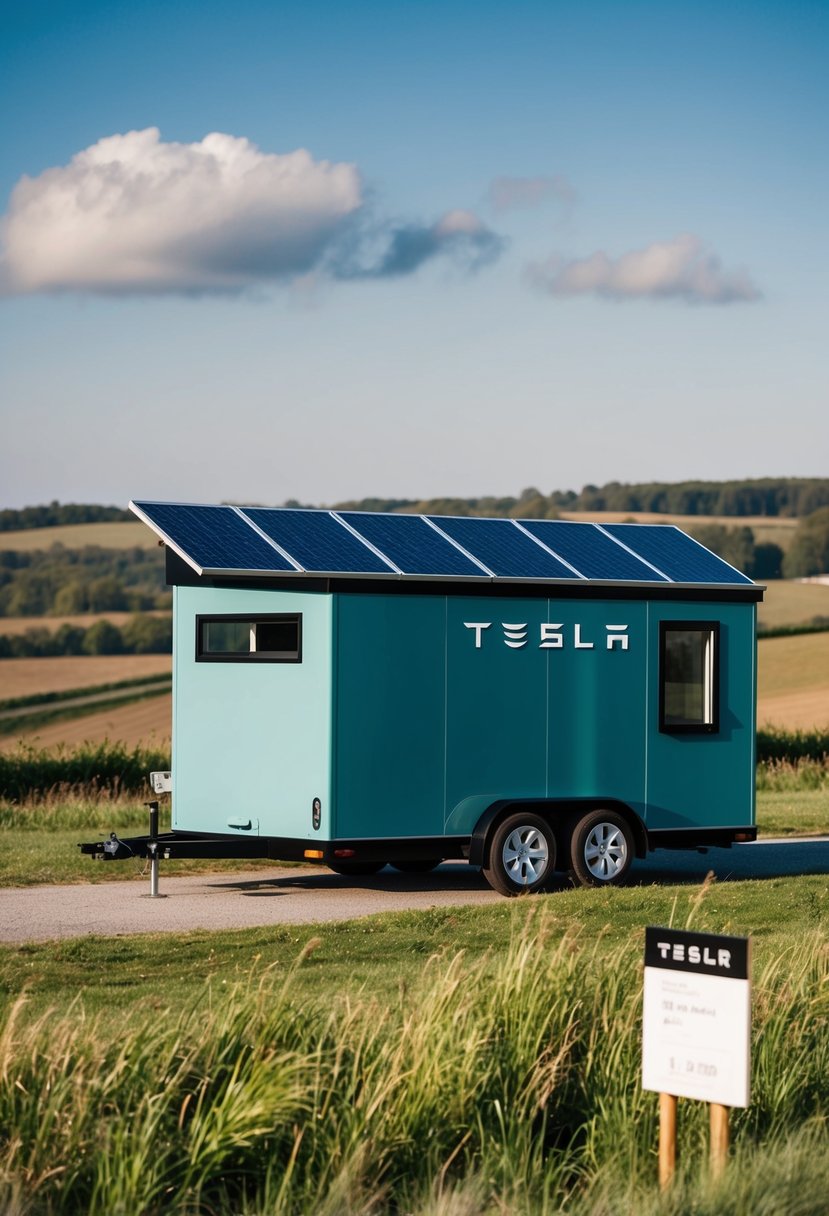
The cost of a Tesla Tiny House generally ranges from about $15,000 to $20,000. This pricing reflects Tesla’s commitment to making sustainable living more accessible. Here’s a breakdown of some key price points:
- Base Price: Starting around $19,900, the base model offers essential features that suit many eco-conscious buyers.
- Optional Upgrades: Depending on the buyer’s needs, various upgrades may be available, which could increase the overall price.
- Energy Features: Many models come equipped with energy-efficient systems like solar panels, which are beneficial but may also affect the total cost.
Price Comparisons
| Feature | Approximate Cost |
|---|---|
| Base Model | $15,000 – $20,000 |
| Solar Panel System | $5,000 – $10,000 |
| Additional Upgrades | Varies by options |
The affordability of a Tesla Tiny House makes it a compelling choice for those looking to combine modern living with eco-friendly technology. It appeals to a wide range of potential homeowners who value sustainability and innovative design.
What Is the Price of a Tesla Tiny House?

The cost of a Tesla Tiny House can vary based on a few key factors. Here’s a general overview:
Base Price: The starting price for a Tesla Tiny House is around $19,900. This price reflects the basic model, which includes essential features.
Upgrades: Additional features can increase the total cost. Options like enhanced solar panels, energy storage systems, and custom designs may add to the price.
Location Fees: Depending on where it is placed, there may be extra costs for land or setup.
Cost Breakdown
Here’s a simplified table to understand the cost elements better:
| Item | Estimated Cost |
|---|---|
| Base Model | $19,900 |
| Upgraded Solar System | $5,000 – $10,000 |
| Custom Features | Varies |
| Setup and Location Fees | Varies by region |
The Tesla Tiny House not only aims to provide efficient living but also promotes sustainability. With features that utilize renewable energy, it’s a modern option for eco-conscious consumers.
What Are the Dimensions of the Tesla Tiny Home?

The Tesla Tiny Home is designed for both compact living and mobility. Its specific dimensions are crucial for understanding its suitability for various lifestyles.
- Length: Approximately 20 feet (6 meters)
- Width: About 7 feet (2.2 meters)
- Height: Roughly 13 feet (4 meters)
These measurements make the Tesla Tiny Home easy to move, allowing it to be towed by a Tesla Model X. With these dimensions, it provides a balance of space and efficiency while maintaining a lightweight structure of around 4,400 pounds (2,000 kg).
The design not only prioritizes comfort but also maximizes the use of space for sustainable living.
Is the Tesla Tiny House Available for Sale in the USA?

The Tesla Tiny House has generated considerable interest due to its innovative design and eco-friendly features. Currently, Tesla is working with a company called Boxabl to produce these compact homes. Boxabl specializes in creating energy-efficient spaces that can be easily transported.
Availability
As of now, Tesla Tiny Houses are not mass-produced and ready for immediate sale. Instead, interested buyers can often find information through Tesla’s own channels or affiliated dealers. Here are some key points regarding availability:
- Official Purchase Channels: Tesla may offer these homes through their website, allowing potential buyers to place orders directly.
- Showroom Options: Some Tesla showrooms may provide displays or models of the Tiny House, where interested individuals can get a closer look.
- Customizability: Buyers may have options to customize their homes, including various finishes and features.
Pricing
The price for a Tesla Tiny House is typically around $19,900. This may be higher than standard tiny homes, but it includes advanced features designed for sustainability and energy efficiency.
Features
A Tesla Tiny House is designed with modern elements that promote a smaller footprint while maximizing livable space. Key features often highlight:
- Energy Efficiency: Built with sustainable materials and equipped with self-sustaining energy systems.
- Minimalist Design: The aesthetic focuses on simplicity and functionality, appealing to those who value modern living.
While purchase details may change, those interested should remain vigilant for official announcements from Tesla and Boxabl regarding future availability and pricing.
What are the distinctive attributes of the Tesla Tiny House?

The Tesla Tiny House is designed with several unique features that make it stand out in the tiny home market. Here are the key characteristics:
Compact Design: Measuring approximately 6m x 2.2m x 4m, this tiny house is not only small but also lightweight, weighing around 2,000 kg. It’s built for mobility, making it easy to transport with a Tesla Model X.
Sustainable Energy System: Equipped with six solar panels that can adjust their angle for maximum sunlight absorption, it can produce up to 4.1 kilowatts of energy. This capability supports daily needs, including cooking and electrical use, all while relying on renewable resources.
Clean Energy Focus: The Tesla Tiny House is designed to operate entirely on clean energy. By utilizing solar power and other renewable sources, it significantly reduces carbon emissions compared to traditional homes.
Advanced Technology: The tiny house includes smart technology features that enhance energy efficiency. This personal energy system allows homeowners to manage their energy consumption effectively.
Eco-Friendly Materials: Constructed with sustainable materials, this tiny house aligns with Tesla’s commitment to environmental responsibility. The design reflects a minimalist lifestyle while ensuring comfort.
These features make the Tesla Tiny House an innovative option for those seeking a more sustainable living space.
How Long Is the Waiting List for Purchasing a Tesla Tiny House?

The Tesla Tiny House has generated significant interest, leading to many people wondering about its availability. Currently, the official waiting list‘s length is not clearly defined, and no specific timelines have been announced for when purchases can be made.
Interest Levels: High demand signifies a likely long waiting period. Many potential buyers are eager to secure these eco-friendly homes.
Official Updates: As of now, Tesla has not provided an official release date or detailed information regarding a waiting list. Interested buyers are encouraged to stay updated through Tesla’s communication channels.
Purchasing Process: When Tesla does launch the tiny house for sale, it is expected that customers will be able to buy directly from Tesla or authorized dealers.
For those interested in sustainable living, the Tesla Tiny House represents a step toward innovative, energy-efficient housing solutions. Desiring one may require patience, as updates from Tesla will shed light on how to proceed with purchases and the waiting list specifics.
Can a Tesla Roof Be Integrated with a Tiny House, and What Are the Advantages?

Integrating a Tesla roof with a tiny house is an innovative concept that supports sustainable living. The Tesla solar roof is designed to generate clean energy, making it a great fit for eco-friendly homes. Here are some key benefits of this integration:
Energy Independence: A Tesla solar roof allows tiny house owners to produce their own electricity. This reduces reliance on traditional power grids and helps lower monthly energy bills.
Sustainability: With renewable energy at the forefront, using solar power minimizes the carbon footprint of a tiny house. This aligns perfectly with the eco-conscious lifestyle many tiny house dwellers adopt.
Compact Design: Tesla roofs are designed to be sleek and aesthetically pleasing. This complements the compact style of a tiny house while maximizing energy efficiency.
Battery Storage: When paired with a Tesla Powerwall, a tiny house can store excess energy generated during the day. This energy can be used during the night or on cloudy days, ensuring a continuous power supply.
Increased Property Value: Homes equipped with solar technology often have increased resale values. This can make tiny houses with Tesla roofs more attractive to future buyers.
Incorporating a Tesla roof into a tiny house not only enhances its functionality but also aligns with a growing trend towards sustainable living and reduced environmental impact.
Final Thoughts

The Tesla Tiny House signifies a significant advancement in the quest for sustainable living. These compact residences utilize advanced technologies like solar panels and the Tesla Powerwall battery, promoting a lifestyle centered around simplicity and self-reliance.
While Tesla does not directly create these tiny homes, its energy storage systems have become fundamental, sparking a movement toward eco-friendly micro-living.
As the world faces critical challenges such as climate change, the Tesla Tiny House stands as a symbol of progress. It demonstrates how individuals can make impactful choices that support a healthier planet. Adopting these sustainable alternatives promotes not only personal well-being but also contributes to a broader effort in environmental preservation. The question remains: Can Tesla’s Tiny Homes influence the broader housing market?

